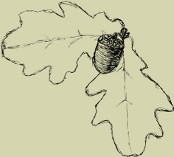42 41 40 39 38 37 36 35 34 33 32 31 30 29 28 27 26 25 24 23 22 21 20 19 18 17 16 15 14 13 12 11 10 9 8 7 6 5 4 3 2 1
Zeszyt 18 (1988)
Relation between the absorbance of the IR bands of wood to the holocellulose and lignin content was expressed in form of a linear equation. The measured and calculated absorbances were presented in form of a criterion of relative standard deviation (ui). On the basis of such a criterion the tested absorbance bands were arranged in series according to their usefulness for quantitative determinations of holocellulose and lignin in wood. From these series of ui values results, that the most useful IR absorption bands for calculation of holocellulose and lignin content are: 1515 cm−1 for pine wood and 1510 cm−1 for beech wood.
Lignin and holocellulose contents were calculated in wood degraded by chemical and biological agents on the basis of absorbance of the bands 1515 cm−1 (pine) and 1510 cm-1 (beech) with the use of three various base lines: I — parallel to the line of spectrum shift going through the absorption minimum at 1880 cm−1, II — line connecting absorption minima at 1880 and 780 cm−1, III — line connecting absorption minima at 1555, 1402 and 1295 cm−1. Calculations were made on the basis of absorbance without the inside standard (Ai) and with the inside standard (Ai/A1378). The results of calculation of the percentages of holocellulose and lignin with determinations were made on the chemical way and on the basis of heat of combustion were compared. The smallest differences were obtained with the use: for pine base line I and II with the inside standard, for beech base line III without the inside standard. Standard deviations of those differences (ρ) are for pine wood: holocellulose 3.16 and 3.61%, lignin 3.74 and 3.86% respectively. For beech wood those deviations are: holocellulose 4.56%, lignin 5.95%.
The Reflectivity (R∞)λ in the UV and visible regions, of sulphate pine pulp treated with various doses of ozone, from 1 to 5% in relation to fibers (in 20°C, at pH = 2) was measured.
Using the method of differential (K/S)λ curves, Decoloration Numbers, DCλ and Relative Decoloration Numbers [DCλ] related to the wavelength were determined. E.H. for the pulp treated with 1% ozone, the [DCλ] values, measured in the 235-700 nm range, show the 52-75% of the original quantity of chromophores were eliminated.
The effects of pulp decoloration in individual parts of the spectrum are coherent with destruction of proper chromophoric structures.
Investigations on the content of cellulose and of some of its properties performed along and across the stem of an about 90 years old oak tree.
The results of cellulose content gets increased from the pith towards periphery at oak of the height levels tested and gets somewhat smaller from the butt towards the top of the stem. The mean degree of polymerization of cellulose gets increased from the pith towards the periphery and the inner core it is the same in all investigated cross sections. In the heartwood zone boundarying to sapwood zone and in the sapwood zone itself the cellulose better arrangement that in the pith zone. This fact is proved by: increase of relative intensities of the absorption bands within the range of 3500-3200 cm−1 of the (K-H) cellulose along the whole height of the stem; higher crystlalinity index of cellulose in the peripheral zone of heartwood and in sapwood as in the inner core; increase of differentiated orientation of the cellulose micelles in the peripheral zone of heartwood and in sapwood as in the inner core; the micelles of cellulose in the pith zone form a spiral texture and in the peripheral zone a fibrous one.
The results of determination of chrome amount in two chrome chemical compounds and in one wood preservative were presented in this work. The amount of chrome in standard water solutions and impregnated wood extracts (Soltox R-12) were determinated by weight, by using a spectrophotometric method (diphenylcarbazide) and by using AAS.
The results of investigations by using spectrophotometric and AAS methods were similar with results by weight measurements.
Pine and beech wood were impregnated with water-born and oil-born preservatives then they were painted with ftalate and oil enamel. Wetting coefficient, adhesion work and surface tension were marked in relation: painting — groundwork and as well adhesion work, surface tension on the surface of boundary layer and adherence with tear off method in relation: varnished coat — groundwork. It was stated that the adhesion of varnished coats was biggest regarding non-impregnated wood, less in relation to the wood impregnated with the oil-born preservatives Xylamit Żeglarski, Xylamit Stolarski and Imprex W as well as Imprex Budowlany and the least regarding pine and beech wood preserved with water solution of Soltox R-12 and Synpregnit CBZ.
The coatings of ftalate enamel indicate the adhesion by about 60-70% higher than the coatings of the oil enamel. The coatings of both the enamels indicate higher adhesion regarding beech wood than in relation to pine wood. There is directly proportional dependence between varnished coats adhesion designated with tear off method and adhesion work in relation wood — varnished coat.
The influence of various systems of polymerization initiating substances containing low-temperature initiators on the course of polymerization of styrene in birch wood during its hydrothermal treatment is discussed. Changes of temperature inside the produced lignomer and also its dimensional stability and static bending strength at 8 ± 2% moisture content and maximum moisture content were observed.
This paper presents the investigation of the influence of modification of beech wood by methyl metacrylate on the change of surface properties, the free surface energy and roughness of the external surface. Surface properties have been evaluated on the basis of the study of the process of wetting the surface of the defined test specimens by water. Based on the obtained results there have been determined the values of free surface energy γdSV and γpSV according to Kloubek. The roughness of the external surface has been expressed by means of Wenzel's factor of roughness R. The obtained results offer the following conclusion:
1. In modification of wood by methyl metacrylate the change of the phase boundary with water takes place. It has been proved the the values of the contact angle increase with the content of polymethyl metacrylate.
2. Free surface energy of wood decreases due to the modification of methyl metacrylate. Simultaneously the polarity of the surface decreases.
3. The surface roughness of modified wood expressed by Wenzel's factor of roughness R increases with the content of the polymer.
Effect of dimensions of members of block double shear test specimen on test results of glue line shear strength was investigated. Test specimen, having the shape of a rectangular prism, were prepared from beech and pine wood using polyvinylacetate glue. Thickness and length of side adherents were changed, whereas the thickness of middle adherent and the size of glue line surface were not changed. Dependence of glue line shear strength upon the length of side adherents was presented by means of regression functions. Highest test results of this strength were obtained by means of test specimens, in which ratios of the thickness and length of side adherents to the thickness of middle adherent were 0.5 and 1, respectively. High values of strength obtained by means of beech specimens, used in these investigations, and the simplicity of their preparation indicate the usefulness of these test specimens for tests of shear strength of glue line.
The method and results of price calculation based on variable costs have been presented. Calculation analysis was conducted with regard to the products of Kostrzyń Paper Mill. It has been indicated that the method of direct cost is particularly useful to establish assortment structure which is optimal due to profit maximization. It should replace the method of full cost been in use so far and which, in case of application in the new economic system can result in stimulation of increasing own costs in the plant.















 Pobierz PDF
Pobierz PDF